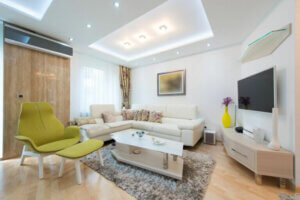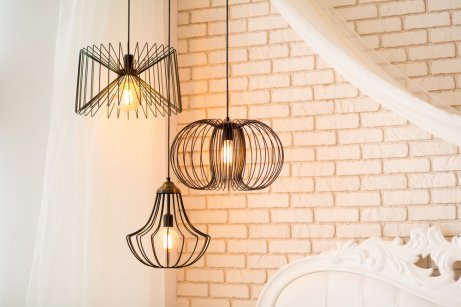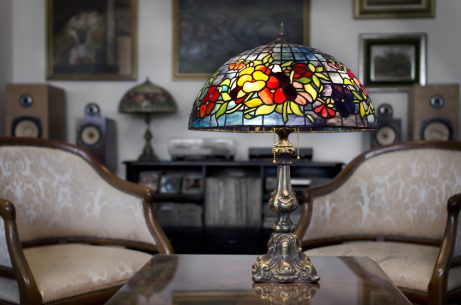Learn How to Illuminate the Dark Areas of your House

Creating the perfect lighting in each area of your house isn’t easy. You have to take into account the space itself, the lights that you’ll be adding, the angles in which they’ll be directed, the lamps, if the light is warm or cool, etc. However, there are some general tricks that you can use to easily illuminate the dark areas of your house.
Illuminate the dark areas of your house – the hallways

It’s very common for people to forget about the hallways. Without a doubt, hallways are one of the areas in the house to which we pay the least attention. And yet, they’re full of possibilities.
When it comes to lighting, if you have a wide hallway, you can use wall sconces as fixed light points. Choose a design that gives them prominence and complement them with pictures in matching frames.
If you have a hallway with high ceilings, you can hang ceiling lamps along it, leaving about 5 feet (1.5 m) in between each one. Make sure that they’re all hanging at the same height.
But what if the corridor has low ceilings? What can you do to give it a feeling of spaciousness? A very effective trick is to use LED lights or ceiling lights that are minimal. Forget about anything that hangs or decorates the walls. And always be careful of the “tunnel effect”.
The type of light

In spaces where you want to create a cozy, quiet, and inviting environment (such as bedrooms), it’s best to use warm lights as a general rule. The same goes for transit areas.
On the other hand, cool light is the best option for more stimulating areas such as the dining room and kitchen. However, you can also use a type of neutral light that mimics daylight and is ideal for illuminating and bringing life into the dark areas of your home.
Basic tips to illuminate the dark areas of your house

Light angles
The light angle refers to the degrees to which the bulb or light source projects the beam of light. For example, if you want to avoid shadows and have continuous lighting, you’ll have to place the light sources closer together.
Light points and switches
The darkest areas of a house are usually passage areas such as corridors and halls. Therefore, it’s important to think carefully about where to place each of the light points, the type of lamp, the light angle, and the exact places where you’ll put the lamps or LEDs.
Spend some time on this planning in order to avoid mistakes. And don’t forget to place the switches in accessible and visible places.
Table and floor lamps

When lighting dark areas of your house, you can use various elements and types of light sources depending on the specific space.
If possible, use floor and table lamps to provide an extra light point. They’re also an ideal complement and give harmony to the decoration.
What about the staircase?
Another area that often lacks lighting is the stairs. If your staircase is open put a spectacular lamp below the stairs. Otherwise, you can opt for wall lamps all along the stairs. And don’t forget about the landing!
With these small tricks, you’ll flood each of those dark areas with light. Do you already have a million ideas in mind? Let’s get to it!
Creating the perfect lighting in each area of your house isn’t easy. You have to take into account the space itself, the lights that you’ll be adding, the angles in which they’ll be directed, the lamps, if the light is warm or cool, etc. However, there are some general tricks that you can use to easily illuminate the dark areas of your house.
Illuminate the dark areas of your house – the hallways

It’s very common for people to forget about the hallways. Without a doubt, hallways are one of the areas in the house to which we pay the least attention. And yet, they’re full of possibilities.
When it comes to lighting, if you have a wide hallway, you can use wall sconces as fixed light points. Choose a design that gives them prominence and complement them with pictures in matching frames.
If you have a hallway with high ceilings, you can hang ceiling lamps along it, leaving about 5 feet (1.5 m) in between each one. Make sure that they’re all hanging at the same height.
But what if the corridor has low ceilings? What can you do to give it a feeling of spaciousness? A very effective trick is to use LED lights or ceiling lights that are minimal. Forget about anything that hangs or decorates the walls. And always be careful of the “tunnel effect”.
The type of light

In spaces where you want to create a cozy, quiet, and inviting environment (such as bedrooms), it’s best to use warm lights as a general rule. The same goes for transit areas.
On the other hand, cool light is the best option for more stimulating areas such as the dining room and kitchen. However, you can also use a type of neutral light that mimics daylight and is ideal for illuminating and bringing life into the dark areas of your home.
Basic tips to illuminate the dark areas of your house

Light angles
The light angle refers to the degrees to which the bulb or light source projects the beam of light. For example, if you want to avoid shadows and have continuous lighting, you’ll have to place the light sources closer together.
Light points and switches
The darkest areas of a house are usually passage areas such as corridors and halls. Therefore, it’s important to think carefully about where to place each of the light points, the type of lamp, the light angle, and the exact places where you’ll put the lamps or LEDs.
Spend some time on this planning in order to avoid mistakes. And don’t forget to place the switches in accessible and visible places.
Table and floor lamps

When lighting dark areas of your house, you can use various elements and types of light sources depending on the specific space.
If possible, use floor and table lamps to provide an extra light point. They’re also an ideal complement and give harmony to the decoration.
What about the staircase?
Another area that often lacks lighting is the stairs. If your staircase is open put a spectacular lamp below the stairs. Otherwise, you can opt for wall lamps all along the stairs. And don’t forget about the landing!
With these small tricks, you’ll flood each of those dark areas with light. Do you already have a million ideas in mind? Let’s get to it!







